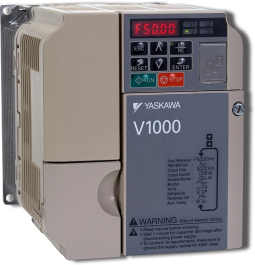Hi Folks,
So I purchased the PM 1440GT 3 phase along with Mark's (mksj) recommended Hitachi WJ200-022SF VFD to bring 3 phase to it. I am just starting to dig into the conversion. Upon reading about the Jog command going into the VFD I seem to recall someplace in the manual the statement that the Jog input needs to be executed before the On (Forward or Reverse) is executed. This totally makes sense, otherwise the motor might already be running i.e. if the On command were executed prior to the Jog command. The manual also says the motor should be off before the the Jog is activated. So I have two questions and I have not been able to find the answers in the WJ200 manuals (yes, there are more than one version of these). Also, the answers are most likely specific to this VFD and not generic.
1) How much earlier does the Jog input signal need to arrive at the VFD input prior to the On signal or can they arrive essentially (nano-seconds) at the same time? (I am not talking about signals going to relays and then to the inputs as relays always introduce a significant delay time.) My guess is that these 7 VFD input terminals are all tied to one 8bit(?) I/O port of the VFD micro-controller and so they are all polled at the same time. If not then I would think that a required delay time between the Jog signal and the On signal would be at most one polling cycle. (While I found comments and uncalibrated wave form sketches I did not find any typical electronics timing requirements in the manual. If one event has to happen before another the timing windows are usually provided. Maybe it is in a different spec doc that I have not found yet?) My own experience with micro-controllers, tells me that there has to be VFD de-bounce timing built into the VFD software to insure a true reading and debounce times are usually a few 10s of milliseconds for mechanical switches (or relay contacts). A single cycle of 60Hz is 16.7 millisecond and we are driving a bit slow motor so there should be no rush in the VFD micro-controller to make a decision as to what to do with an input signal. Debounce algorithms usually do something like... look at an input, wait a debounce time, and then look at it again to insure that it has not changed. If it has changed it is not a valid signal so measure some more. To determine if a switch has opened a similar debounce process is used.
2) Is there any reason that two inputs cannot both be assigned to the same physical function, with for example different attributes like acceleration time. For example, can one program input 1 and input 5 to both activate the ON Forward command? If no one has tried this I guess I will just have to experiment, but would prefer to hear from those of you who might have experience with this already. The second part of this is then to know what happens when both inputs get activated at the same time? Or, what happens if they are both active, but one is turned off before the other. It is not obvious that one can or cannot do this, it is just a question of how the micro-controller code inside the VFD is written to handle it. Clearly, one has a Forward input and an Reverse input, but what happens if they are both turned ON.... the manual says that the motor does not turn on and I assume that if one is ON to cause the motor to be running and the other is then turned ON that the motor will either continue to run or it will shut down, but at what de-acceleration rate?
PS. My first complaint about the WJ200-022SF is its physical size! It is too long(depth) to fit easily into the PM 1440GT electronic hole in the stand base! It is too bad the hole is not 3 inches deeper. There is essentially nothing behind the welded back plate of the 1440 to have prevented it from being deeper. I will figure out a way to put it in with the rest of the electronics... somehow. I see that Mark (mksj) showed it located behind that plate, and I had thought of that, but it is not very satisfying as it will not pull out with the other electronics... and I do not know how much oil and other dirt will get in there! In fact, I really do not see why equipment makers feel that they need to put the electronics in the back at all. These machines seldom sit out in the middle of a room so that the back is just as exposed as the front. In my case it is up against a wall meaning you have to move the lathe to work on it.
Thanks,
Dave


